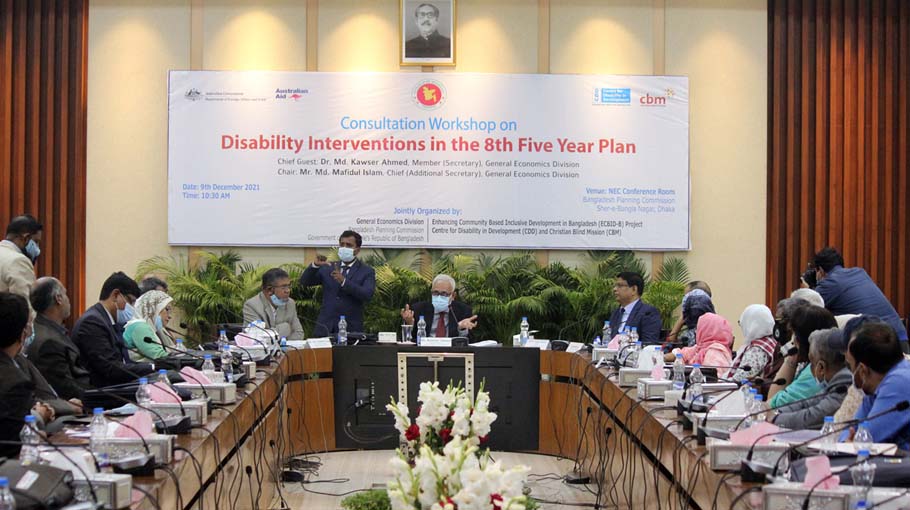No dependable info on people with disabilities in Bangladesh

There are a number of departments in the country working on demography but their information on the total number of people affected by disabilities widely varies making it hard for anyone to depend on.
According to the 2011 national census, 1.4 percent of the population has disabilities while a 2010 household survey conducted by the Bangladesh Bureau of Statistics (BBS) suggests the percentage is 9.6 and a similar survey in 2016 shows the rate at 6.94 percent.
Speakers at a consultation workshop held at the conference room of the National Economic Council (NEC) on Thursday highlighted the issue. General Economic Division (GED) of the Planning Commission, Center for Disability in Development (CDD) and Christian Blind Mission (CBM) jointly organized the workshop titled “Disability Intervention in the 8th Five-Year Plan”.
Quoting the World Health Organization’s Global Report on Disabilities-2011, the keynote paper presented at the workshop said 15.6 percent of people of the world are affected by disabilities, 80 percent of whom live in developing countries. However, the ongoing disability detection survey by the Department of Social Services has identified 2,433,723 people with disabilities (PWDs) until December 8, 2021.
Planning Commission’s GED Member (Secretary) Dr Md Kawser Ahmed attended the event as the chief guest while the division’s Chief Md Mafidul Islam (Additional Secretary) presided over it. CBM Country Director Muhammad Mushfiqul Wara, CDD Executive Director AHM Noman Khan, high officials of different government departments, and representatives of non-government organizations and organizations run by PWDs participated in the discussion.
Referring to different surveys, the keynote paper said the lack of opportunities for PWDs for the flourishing of their talents and their inadequate access to employment are having a negative impact on the gross domestic product (GDP) of the country.
According to a 2019 World Bank report, Bangladesh’s cost of disabilities is estimated at about 1.74 percent of its GDP.
The chief guest in his speech appreciated the proposals made by the discussants and laid emphasis on easy access of PWDs to everywhere in society. He suggested the inclusion of a chapter on disabilities in textbooks at the primary and secondary levels and teaching sign language to teachers for enhancing awareness about disabilities.
Speakers said though the overall condition of the PWDs in Bangladesh has changed over the last two decades and the matter is being considered in the national development agenda, expected results regarding them have not been achieved yet.
They said most of the PWDs in Bangladesh do not have required access to healthcare, education, employment, empowerment and socio-political activities.
Read more: UNGA president calls for disability-inclusive recovery from Covid
The speakers said PWDs are deprived of health services due to infrastructural barriers and service providers’ lack of skill. Problems in communications, lack of awareness at the society and family levels, lack of necessary instruments and lack of proper training of teachers have appeared as barriers to the inclusion of disabled children in education, they added.
Several suggestions were made at the workshop. They include enhancing the participation of PWDs, particularly women, in the formulation and execution of development plans; building public facilities following universal construction rules to ensure PWDs’ easy access there; and making software and hardware at public-private initiatives to facilitate PWDs’ easy use of technology contents.


